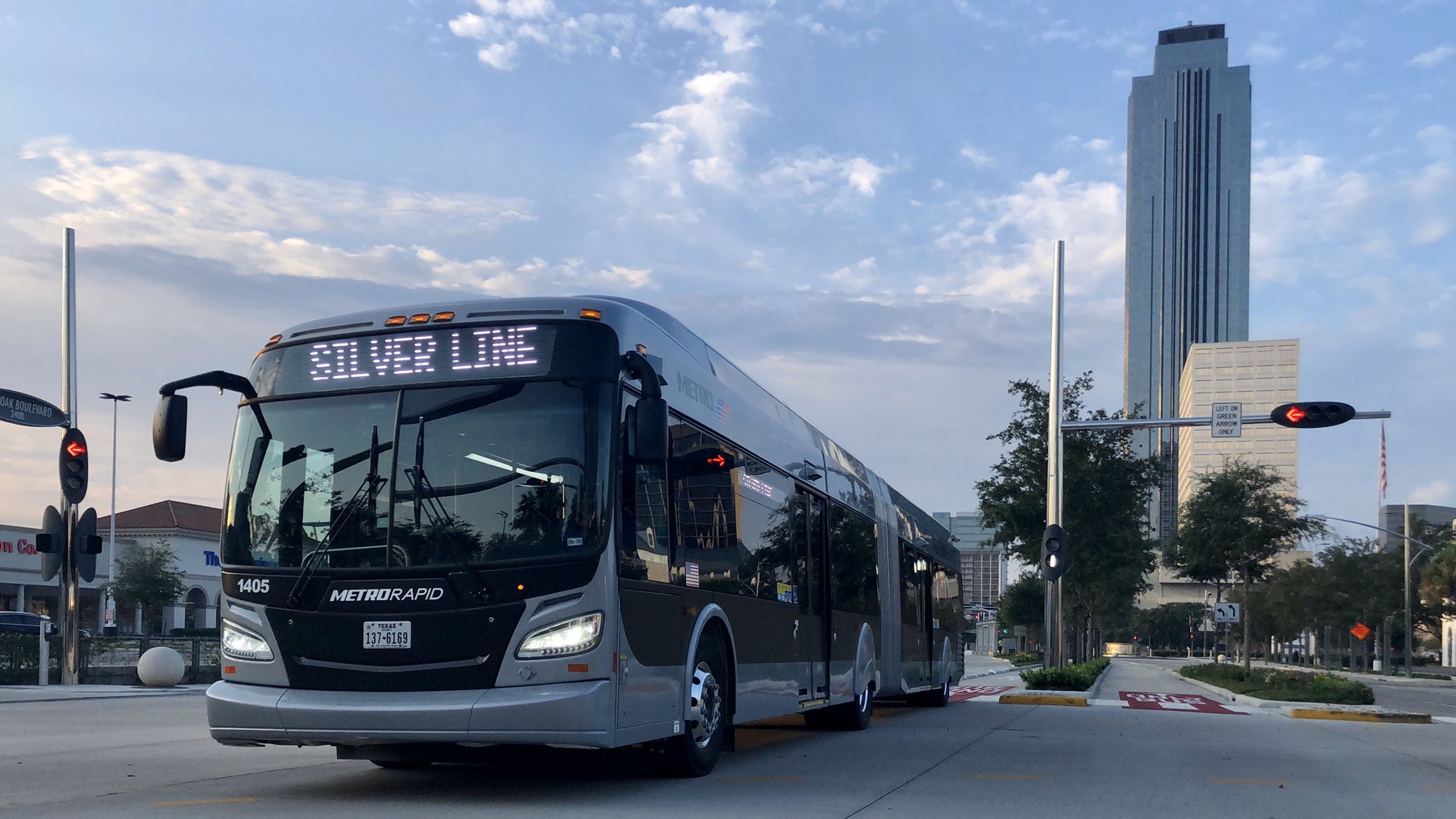T.J. Buttons is used to a bus ride in Houston giving him plenty of time to check his phone. On that front, Houston’s first bus rapid transit route failed miserably.
“It’s so fast,” Buttons said as he bumped along on opening day Sunday of the Silver Line, operated by Metropolitan Transit Authority through Uptown.
More than four years of work — some a source of frustration for critics who called the project unnecessary along the car-centric corridor — preceded the opening, muted by COVID’s constraints on travel in the area. Nonetheless, officials and transit supporters said the opening was cause of celebration, and an indication of the changes coming as Metro plots 75 more miles of bus rapid transit in the region.
For Buttons and other riders, it means a much faster trip than the Route 33 buses it replaces along Post Oak, with fewer stops and less competing with traffic.
“It’s really like the train,” Buttons said.
That’s exactly what officials wanted with the project designed by Metro and the Uptown Houston Management District, which rebuilt the street and sidewalks as part of a $192.5 million project. Fourteen 60-foot buses will operate the route, traveling along an elevated busway along Loop 610 and then in dedicated transit lanes in the center of Post Oak.
The Silver Line operates between the Northwest Transit Center near Interstate 10 and Loop 610 through Uptown mostly along Post Oak to the new Westpark Lower Uptown Transit Center south of Interstate 69 near Bellaire. Fifteen bus routes connect directly to the service, via the two transit centers.
Metro and Uptown officials have said the buses will deliver service similar to light rail with boardings via platforms in the middle of the street. Trips will be faster, transit officials said, because the buses are not inching along in regular traffic. Compared to Houston’s light rail system, the buses might outpace trains because traffic is not in front of them or turning from the same lanes, improving both speed of trips and safety.
“If we don’t have shared left turn lanes, that knocks a lot of our issues out,” said Andrew Skabowski, chief operations officer for Metro.
[…]
Getting the timing right in Uptown, especially at key intersections such as Richmond, is critical to not having the buses obstruct others. In downtown Houston, shortly after the Green and Purple lines opened in 2015, Houston Public Works and Metro spent months tweaking the traffic signal timing to find the right routine.
Skabowski said if there is a silver lining to opening the Silver Line during a pandemic, it is that lower traffic demand because of fewer commutes and shopping trips gives officials a grace period to get things right.
“We still don’t have normal conditions, so that gives us a little window to get there,” he said. “We have the perfect time period to tweak it.”
See here for the previous update, and here for a good Twitter thread showing what the ride experience looks like. As far as that goes, it looks really good, and the service will be frequent (every ten minutes during the day) and reliable. Everything we know about transit ridership says that a comfortable and convenient experience will draw riders, so we’ll see what we get here, especially once people start returning to something like a normal routine. And as Christof Spieler pointed out, this line will connect to multiple high-frequency east-west bus lines, thus really expanding the network in Houston. Later on, this will be extended to connect to the Texas Central station. It’s an exciting development, and next up should be the BRT replacement for the Universities light rail line.


Extend to connect to the Texas Central station? Maybe, if the HSR ever built.
The project has ballooned to $30 billion from an original $10 billion.
This “privately funded” project is begging for federal dollars, they have spent their money – they’ve laid off about half their employees.
There are severe issues with the FEIS (the ROD has been pushed back to September, was supposed to come out last month).
Amtrak has cut the Texas Eagle to 3x per week, threatening the STBs oversight, which would leave the HSR construction more vulnerable to local laws (all counties except Tarrant and Harris oppose the HSR).
The Corona virus makes their previous ridership numbers (which were at least double reality at the time) even more ridiculous.
Oh yeah, apparently Texas Central doesn’t own that 33% of parcels needed for the track they’ve been talking about controlling for years, some Japanese entity in the Caymans does. So, no physical assets.